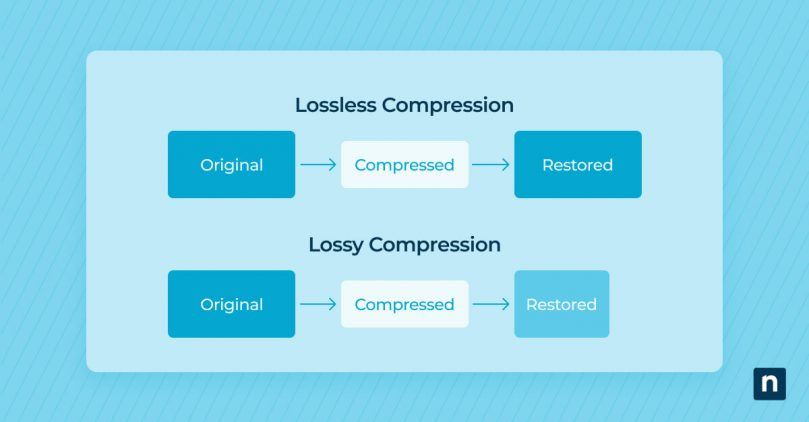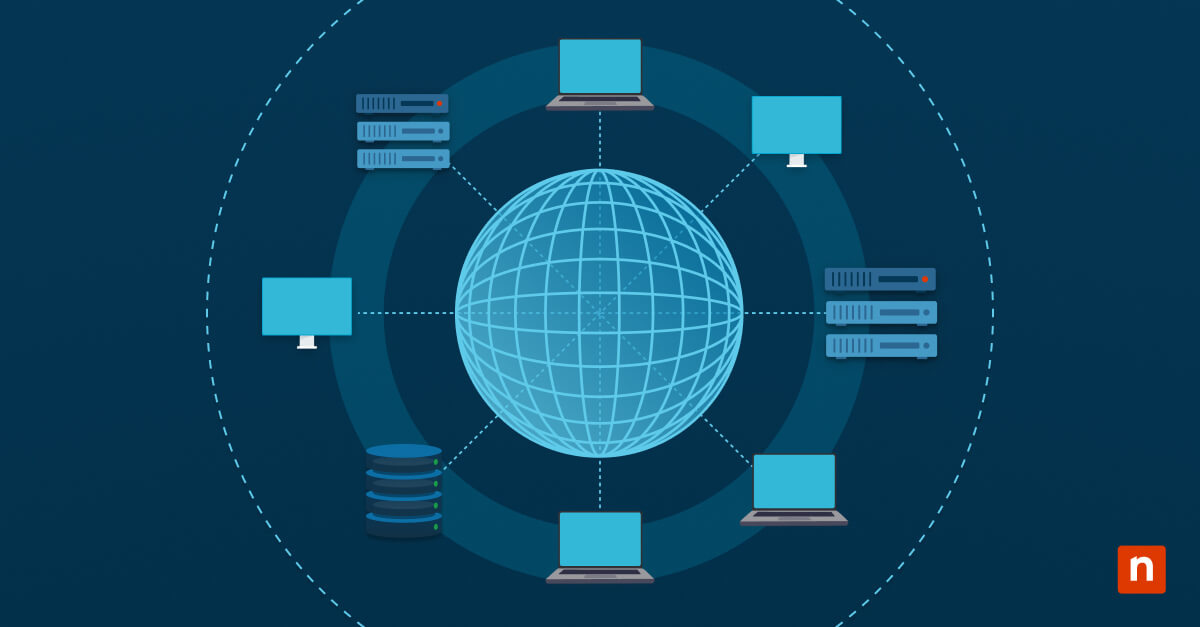Digital media compression serves as the cornerstone of data reduction and efficiency enhancement in the digital realm. Its significance lies in its ability to minimize file sizes, thereby saving storage space and reducing bandwidth consumption during data transmission.
This foundational step is crucial for managing the ever-expanding volumes of digital content, from high-resolution images and videos to extensive databases. The choice of the right compression method is critical and must be made with careful consideration of the intended use case, and factors such as quality, storage limitations, and bandwidth availability play critical roles in this decision-making process.
Lossy and lossless compression represent the two primary methods of reducing file size, each with its unique approach to data reduction. Lossy compression works by eliminating unnecessary information, often resulting in a decrease in quality.
In contrast, lossless compression reduces file size without sacrificing any data, allowing for the original file to be perfectly reconstructed from the compressed version. Understanding the balance each method strikes between quality preservation and file size reduction is essential for choosing the appropriate compression technique.
This article aims to dissect the nuances of lossy and lossless compression, highlighting their mechanisms, applications, advantages, and drawbacks to empower readers to make informed decisions on the most suitable compression technique for their specific requirements.
An overview of lossy compression
Lossy compression is characterized by its ability to significantly reduce file sizes by discarding bits of information considered less critical to the overall content’s integrity. This approach is particularly effective for certain types of digital media where a perfect reproduction of the original is not strictly necessary.
The underlying process of lossy compression involves analyzing the data to identify and eliminate portions that contribute the least to the user’s experience. This method can lead to noticeable reductions in quality, depending on the degree of compression applied.
- Common use cases for lossy compression include streaming services, where bandwidth efficiency is crucial, and on devices with limited storage capacity.
- Examples of file formats utilizing lossy compression are JPEG for images, MP3 for audio, and MPEG-4/MPEG for video.
- Trade-offs involve a careful balancing act between achieving manageable file sizes and maintaining acceptable quality levels. Users must navigate these compromises by considering the final use case of the compressed media. A lower- or medium-quality image might be perfectly acceptable for a thumbnail on a website or on social media but useless for a print publication where clarity and detail are crucial.
An overview of lossless compression
Lossless compression, on the other hand, ensures that no data is lost during the compression process. This method allows for the original data to be perfectly reconstructed from the compressed file, making it ideal for applications where data integrity is paramount.
The technical process of lossless compression identifies and utilizes patterns within the data to efficiently encode information, thus reducing file size without altering the original content.
- Common applications include professional photography and audio production, where the preservation of original quality is non-negotiable.
- File formats employing lossless compression include PNG for images, FLAC for audio, and H.265 (HEVC) or Apple ProRes for video.
- The balance in lossless compression revolves around achieving compression while maintaining the original data’s quality. However, the compression ratios are generally lower compared to lossy methods, meaning less reduction in file size is possible without data loss. The tradeoff is usually greater computational complexity, as discussed below.
Comparing lossy and lossless compression
| Feature | Lossy compression | Lossless compression |
| Methodology | Reduces file size by discarding less critical data. | Reduces file size without data loss. |
| Primary application | Online streaming, digital photography for the web. | Archival storage, high-quality audio production. |
| Data Integrity | Sacrifices for smaller file size. | Preserves completely. |
| Bandwidth & storage efficiency | High due to smaller file sizes. | Lower, as files are larger than lossy compressed. |
| Suitability | Scenarios prioritizing efficiency over accuracy. | Scenarios requiring data preservation. |
Applications of lossy and lossless compression
- Image compression: Despite lossy JPEG’s widespread use for web images due to its balance between quality and file size, PNG (lossless) is increasingly preferred for images requiring transparency (always a JPEG weak point) or exact replication, like logos.
- Audio compression: While a lossy format, MP3 is still a popular consumer music streaming format for its smaller file sizes. FLAC’s lossless audio is prized and praised by audiophiles and professionals alike for its audio fidelity. Advances in both device storage capacities and audio quality in mobile earbuds are, however, making FLAC’s quality increasingly accessible and attractive codec in the consumer space.
- Video compression: H.264 (lossy) offers a good compromise for online video streaming, while H.265/HEVC (lossless) can offer up to 50% improvement in video compression efficiency over H.264, permitting better data compression at the same level of video quality. The primary tradeoff is H.265’s higher computational complexity – encoding and decoding H.265/HEVC video requires more processing power than H.264, potentially necessitating hardware acceleration, like a GPU, for smooth playback on some devices. This can limit its compatibility and increase hardware requirements, especially for older devices or those without dedicated video decoding capabilities. Apple ProRes (lossless) is used in professional video editing for its high quality and editing flexibility, but its proprietary nature and relatively high cost of/bar to entry makes it a relative edge case to the widespread usage of less encumbered formats.
- Other use cases: Both the web optimization and archiving use cases underscore the importance of choosing the right compression method based on the specific needs of image and video content management, as well as long-term data preservation.
Factors influencing compression choice
The decision between lossy and lossless compression is influenced by a myriad of factors, including the quality requirements of the media, storage, and bandwidth constraints, and the specific considerations for web and mobile applications.
Balancing these factors against the need for quality, size, and compatibility is crucial in selecting the appropriate compression method.
Best practices for compression
Optimizing settings for either compression type involves a thorough understanding of the content’s requirements and the intended use case. It is essential to maintain a balance between quality and file size, conduct tests to evaluate compression outcomes, and keep backups of original files for future reference.
Staying updated on advancements in compression technology can also offer new opportunities for efficiency and quality improvements. Optimizations such as cloud GPU providers or CDNs (Content Distribution Networks) are worth investigating at scale.
Optimizing your digital media for tomorrow’s needs
The distinctions between lossy and lossless compression, their respective advantages, and situational applications underscore the importance of making informed compression choices.
By carefully considering the specific needs and constraints of their projects, individuals and organizations can effectively leverage ongoing advances in compression technologies to manage digital media and data more efficiently, ensuring both the longevity and accessibility of their content.
In the evolving landscape of digital media, mastering the art of compression allows us to navigate the delicate balance between innovation and preservation, ensuring that our digital footprints remain both efficient and true to their original brilliance.








